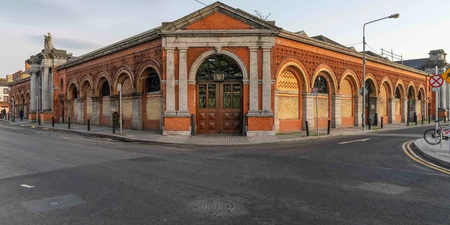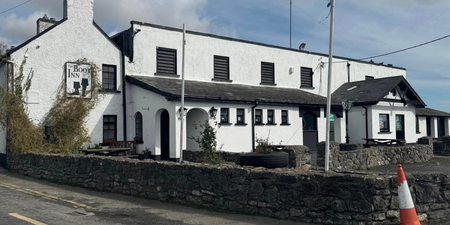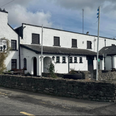Some believe that curiosity killed the cat, others say no-one who is curious is dumb. Either way, curiosity has certainly benefitted all of our lives at some stage, be it good or bad.
Sure without curiosity, we wouldn’t have velcro, or Cornflakes, or the slinky! Now, could you even imagine a world without the slinky?
Here are seven weird and wonderful things created by sheer curiosity, or to put it another way, by complete accident.
1. Cornflakes
In 1894, Dr John Kellogg (you see where this is going…) was the superintendent of the Battle Creek Sanitarium in Michigan. He and his brother Will, were Seventh Day Adventists, and they were searching for wholesome foods to feed patients that also complied with the Adventists’ strict vegetarian diet.
When Will accidentally left some boiled wheat sitting out, it went stale by the time he returned. Instead of scrapping it, the boyos sent it through rollers, hoping to make long sheets of dough, but got flakes instead.
They tried this same method with corn, et voila, Cornflakes were born.

2. Dynamite(-eee)
Alfred Nobel (yes, of Nobel Prize fame) was at the top of him game in the 1860s. He spent quite some time playing around with nitroglycerin, a popular form of explosive at the time, but it was completely unstable. Nobel, who owned a nitroglycerin factory, knew it was worth trying to make the compound safer, so he started to test it.
One day, while researching the explosive in his lab, he accidentally dropped a vial of it on the ground. When it didn’t explode, he realized it was because the substance had seeped into sawdust. The mixture of the two essentially made nitroglycerin more stable.
Nobel refined this mix, making it stable enough to produce on a mass scale.

3. Velcro
Did you know that a dog invented velcro? Well, he helped.
Swiss engineer George de Mestral was out for a hunting trip with his pooch, and noticed the annoying tendency of burrs to stick to its fur (and his socks). Later, looking under a microscope, Mestral observed the tiny “hooks” that stuck burrs to fabrics and furs. De Mestral was fascinated by this and spent years developing what we now call Nylon.
It wasn’t until two decades later that NASA popularised the sticky stuff that we all used to put on our first runners.

4. The cure for leprosy
Irishman Vincent Barry is the one to thank for this unbelievably lucky accident. Barry discovered a cure for leprosy while he was looking for answer for Ireland’s ever-growing tuberculosis problem.
He made this accidental and miraculous discovery, with the catchy title of compound B663, which would go on to cure over 15 million people of this devastating disease.

5. Viagra
If any of you are in any way linked to the medical, or are, like us, an avid watcher of Grey’s Anatomy, you will certainly have heard what an Angina Pectoris is. For those of you not in the know, it’s the fancy name for chest pain.
The pharmaceutical company Pfizer developed a pill with the catchy name UK92480 to help combat this pain. The pill failed its primary purpose, but the secondary side effect was startling.
The drug became known as Viagra, and you know exactly what it does you filthy lot.

6. The Slinky
In 1943, Navy engineer Richard James was trying to figure out a way to use springs to keep the delicate instruments aboard his ships from knocking about and eventually becoming smithereens of what they once were.
He noticed that one day, when he knocked one of his prototypes over – instead of it crashing to the floor, it gracefully sprang downward, and then returned to its original position. He found this fascinating.
One ‘Eureka’ moment later and BAM! 300 million sold worldwide!.

7. Penicillin
Alexander Fleming, although a great scientist, was a bit of a scruff. In 1928, he was growing and studying lots of bacteria known as staphylococci on agar plates.
One evening, it all got a bit too much for Fleming and he decided a holiday was exactly what he needed, before leaving in a flurry. in this flurry, he forgot to put lids on his projects in order to sterilise them AND left the windows open. Twit.
When he came back, Alexander noticed that lots of his culture plates were mouldy.
Just before he put all the plates in the washing up to get clean, Fleming put the thinking cap on and noticed something. Although lots of bacteria were growing on his plates, there was a clear ring in the jelly around some of the spots of mould where no bacteria was growing Something had killed the bacteria that was covering the jelly.
A few experiments later and Fleming finally, in 1938, discovered Penicillin, and therefore the cure to save millions.

And, of course, the Chambers of the Curious
Curiosity fuels discovery – as we’ve just seen – and but where does one go to fuel their curiosity?
As we reported earlier in the month, visitors “will be taken on a journey over the tempestuous plains of the cerebellum to the volcanic wilderness of their curiously named ‘Fissure of Rolando’, and invited to reawaken these essential creative parts of the mind, coaxing up a greater sense of interest in the world, and a renewed inquisitive vigour.”
Well. Colour us intrigued.
Chambers of the Curious will take place on November 26-28. All tickets are now sold out, but for more information and further updates click here.

Topics:
RELATED ARTICLES






MORE FROM Lovin Dublin
























MORE FROM Lovin Dublin




















